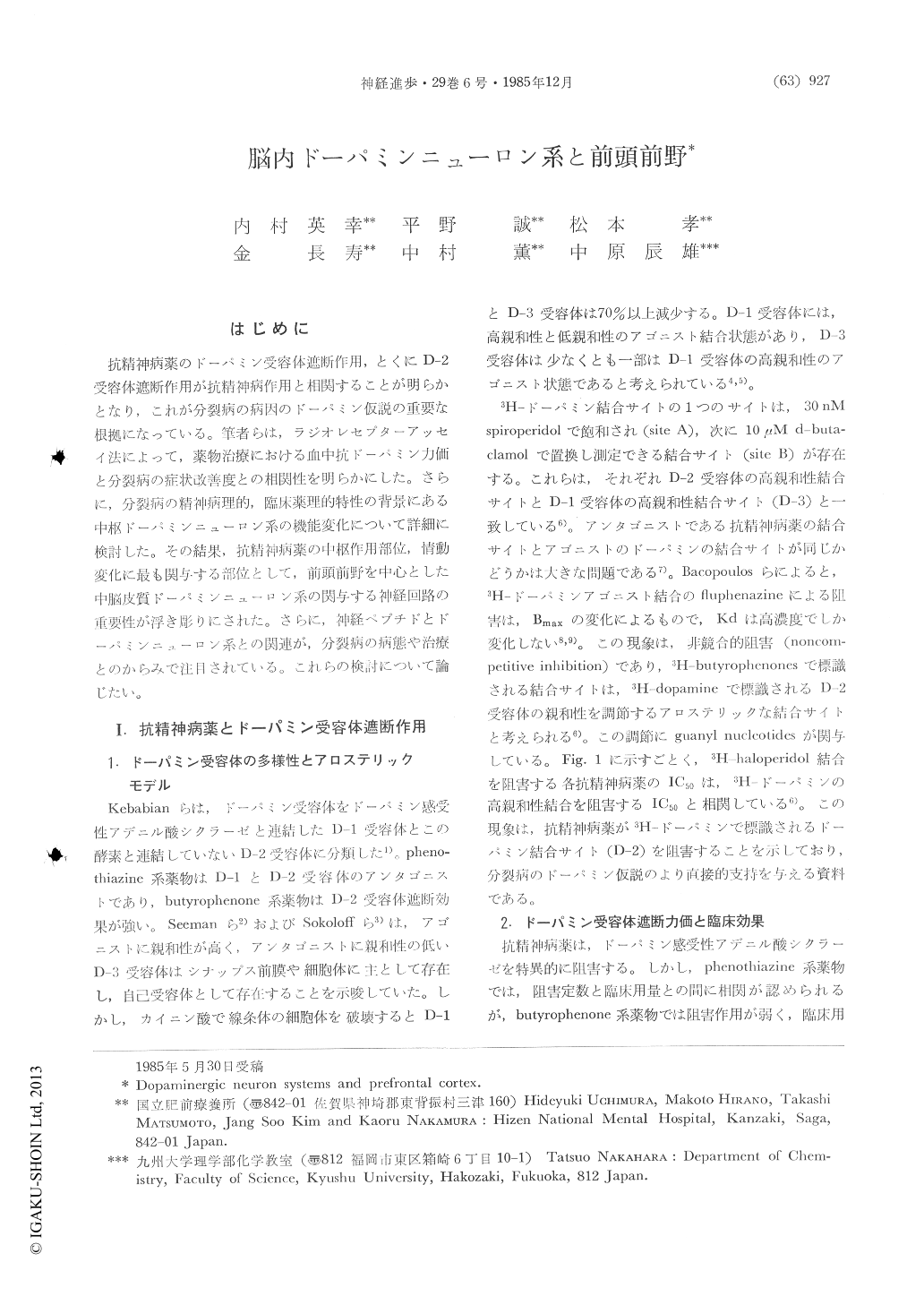Japanese
English
- 有料閲覧
- Abstract 文献概要
- 1ページ目 Look Inside
はじめに
抗精神病薬のドーパミン受容体遮断作用,とくにD−2受容体遮断作用が抗精神病作用と相関することが明らかとなり,これが分裂病の病因のドーパミン仮説の重要な根拠になっている。筆者らは,ラジオレセプターアッセイ法によって,薬物治療における血中抗ドーパミン力価と分裂病の症状改善度との相関性を明らかにした。さらに,分裂病の精神病理的,臨床薬理的特性の背景にある中枢ドーパミンニューロン系の機能変化について詳細に検討した。その結果,抗精神病薬の中枢作用部位,情動変化に最も関与する部位として,前頭前野を中心とした中脳皮質ドーパミンニューロン系の関与する神経回路の重要性が浮き彫りにされた。さらに,神経ペプチドとドーパミンニューロン系との関連が,分裂病の病態や治療とのからみで注目されている。これらの検討について論じたい。
Abstract
1. It is generally agreed that antipsychotic drugs exert their therapeutic and extrapyramidal effects by blocking dopamine (DA) receptor in the brain. It is demonstrated that antipsychotic drugs bind a site different from but allosterically linked to a high affinity 3H-dopamine binding site. In our experiments, serum levels of anti-dopaminergic, antiserotonergic and anti-α-adren-ergic activities were determined in schizophrenic patients. In 16 patients with histories less than 5 years, antidopaminergic activities were related significantly with total BPRS score and BPRS factor, thought disturbance.

Copyright © 1985, Igaku-Shoin Ltd. All rights reserved.


